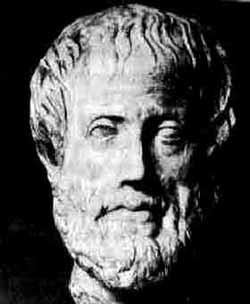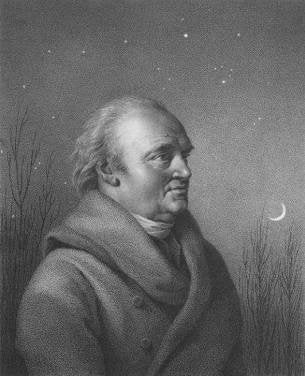A very long time ago: Earth was considered fixed and immobile. The “firmament,” as the starry sky was known, slowly turned overhead. Moving bodies (the sun, the moon, and the planets) were associated with gods. Because these objects moved within a certain group of constellations, those starry figures took on greater significance. The Chaldeans, around 5000 b.c. were the first to formalize the influences of the planets. They called them bibbu, or wild goats, for the way they seemed to prance and move through the constellations. Much later, the Greeks called this path that the sun, moon, and planets followed zodiakos kyklos, or “circle of animals” — the zodiac.
c. 2500 b.c.: Stonehenge, a ring of stones built for astronomical purposes, is constructed in southern England.
c. 240 b.c.: The astronomer Eratosthenes of Syene measures the circumference of Earth. His result, approximately 25,000 miles, was remarkably accurate considering he only used basic geometry for his measurement.
c. 140 b.c.: The ideas of Aristotle were put into a working theory by Claudius Ptolemaeus, better known as Ptolemy. He mathematicaly worked out a complex system of circles revolving around other circles to explain the motions of the planets.
1543: Nicolas Copernicus’s book De Revolutionibus Orbium Coelestium (The Revolution of the Celestial Spheres) is published. This book places the sun, rather than Earth, in the center of the solar system.
1610: Galileo Galilei uses a telescope to observe the four large moons of Jupiter. These satellites orbit the planet, and not Earth, proving the fallacy of the Earth-centered system. Many skeptics were unconvinced yet refused to look through Galileo’s telescope.
1687: The so-called “Age of Modern Astronomy” begins with the publication of Isaac Newton’s Principia Mathematica, which defines the law of gravity. From this point onward, the position of celestial objects can be accurately defined and predicted.
1782-5: Herschel catalogs a thousand “nebulae” in a detailed survey of the northern sky. The true nature of these objects, especially the ones he cannot resolve, is unknown to Herschel.
1846: Neptune was discovered, expanding the known size of the solar system by an additional fifty percent. Neptune’s discovery was a triumph for theoretical astronomy and for Newton’s theory of gravitation in particular. The planet’s position was mathematically predicted by two astronomers, Urbain LeVerrier and John Couch Adams.
1880s: Astronomers begin to debate whether nebulae are part of the Milky Way Galaxy or lie beyond it. The debate continued until 1912, when Henrietta Leavitt discovered 25 Cepheid variable stars (stars which are used to obtain precise distances) in the Small Magellanic Cloud, one of the satellite galaxies of the Milky Way. This allowed astronomers to create and calibrate the first stellar “distance ladder” to celestial objects. Since the period of variability of a Cepheid variable star is directly related to its luminosity (how bright the star really is), astronomers can measure the period, compare it to the star’s brightness, and compute its distance.
1920: The Shapley-Curtis debate found two famous astronomers, Harlow Shapley and Heber D. Curtis offering different answers to the question, “Are spiral nebulae part of our galaxy or external galaxies unto themselves?” Shapley argued that the nebulae were clouds within our Milky Way. Curtis countered that the objects were external galaxies, systems similar to the Milky Way but at vast distances. The debate was resolved — in Curtis’s favor — when the astronomer Edwin Hubble discovered Cepheid variable stars in the Andromeda Galaxy. Their calculated distance was much greater than even Hubble predicted as his furthest proposed extent for the Milky Way.
1963: The first quasar was discovered. The name quasar stems from the label “quasi-stellar radio source.” At that time, quasars were the most distant objects observed but seemed to be impossibly small. They were pouring out as much energy as a thousand galaxies but were only 0.1 percent as large as an ordinary galaxy. Quasars stretched our vision of the universe past one billion light-years, and today quasars have been found ten times as far away.
1965: The remnant heat of the creation of the universe — the 3-Kelvin cosmic microwave background radiation — was discovered by Arno Penzias and Robert Wilson from Bell Laboratories while they were trying to eliminate causes of noise in a radio wave detector. This discovery was convincing proof of the Big Bang Theory, first proposed in 1927 by Georges Lemaitre.
1980s: A new idea, the Inflationary Theory, began to gain acceptance among astronomers. This theory proposed that the universe, a tiny fraction of a second after the Big Bang, experienced a burst of incredibly fast expansion, then continued expanding at a slower rate, which we observe today.
1998: Astronomers studying the behavior of nearby and distant supernovae discover not only that the universe will expand forever, but also that its expansion is speeding up.
Now: Astronomers believe that the baryonic (visible) matter of the universe comprises only 0.5 percent of all there is. The rest of the universe is either dark matter (about one-third) or dark energy (about two-thirds). For more information on dark matter and dark energy, read Absurd Universe in the November 2003 issue of Astronomy.












